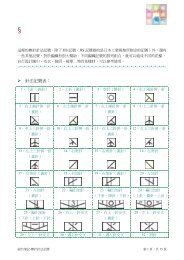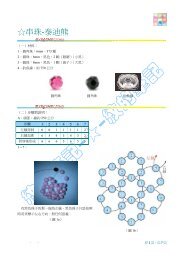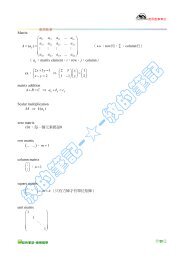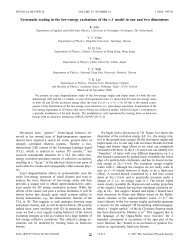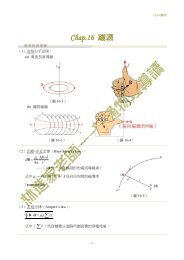Chapter 22 Materials Selection and Design Considerations
Chapter 22 Materials Selection and Design Considerations
Chapter 22 Materials Selection and Design Considerations
Create successful ePaper yourself
Turn your PDF publications into a flip-book with our unique Google optimized e-Paper software.
W90 • <strong>Chapter</strong> <strong>22</strong> / <strong>Materials</strong> <strong>Selection</strong> <strong>and</strong> <strong>Design</strong> <strong>Considerations</strong><br />
Strength (MPa)<br />
10,000<br />
1000<br />
100<br />
10<br />
1<br />
P = 100<br />
P = 30<br />
P = 10<br />
Cork<br />
P = 3<br />
Balsa<br />
Balsa<br />
Parallel<br />
to Grain<br />
Polymer<br />
foams<br />
Engineering<br />
composites<br />
Ash<br />
Oak<br />
Pine<br />
Fir<br />
Ash<br />
Woods Oak<br />
Pine<br />
Fir<br />
Perpendicular<br />
to Grain<br />
Wood<br />
Products<br />
LDPE<br />
Soft<br />
Butyl<br />
PP<br />
PS<br />
Engineering<br />
ceramics<br />
Nylons<br />
PMMA<br />
Glasses<br />
MEL<br />
PVC<br />
Epoxies<br />
Polyesters<br />
HDPE<br />
PTFE<br />
PU<br />
Silicone<br />
CFRP<br />
GFRP<br />
UNIPLY<br />
KFRP<br />
CFRPBe<br />
GFRP<br />
Laminates<br />
KFRP<br />
Elastomers<br />
0.1<br />
0.1 0.3 1 3 10 30<br />
B<br />
Si<br />
Mg<br />
Alloys<br />
Density (Mg /m 3 )<br />
Engineering<br />
polymers<br />
Porous<br />
ceramics<br />
Figure <strong>22</strong>.2 Strength-versus-density materials selection chart. <strong>Design</strong> guidelines for<br />
performance indices of 3, 10, 30, <strong>and</strong> 100 (MPa) 2�3 m 3 /Mg have been constructed, all having<br />
3<br />
a slope of 2. (Adapted from M. F. Ashby, <strong>Materials</strong> <strong>Selection</strong> in Mechanical <strong>Design</strong>.<br />
Copyright © 1992. Reprinted by permission of Butterworth-Heinemann Ltd.)<br />
Now, taking the logarithm of both sides of Equation <strong>22</strong>.9 <strong>and</strong> rearranging yields<br />
log t f � 3<br />
2 log r � 3<br />
2 log P<br />
Diamond<br />
Si3N4 Sialons<br />
Al2O3 ZrO2<br />
Cermets<br />
MgO<br />
Ge<br />
Engineering<br />
alloys<br />
(<strong>22</strong>.10)<br />
This expression tells us that a plot of log �f versus log will yield a family of straight<br />
<strong>and</strong> parallel lines all having a slope of each line in the family corresponds to a<br />
different performance index, P. These lines are termed design guidelines, <strong>and</strong> four<br />
have been included in Figure <strong>22</strong>.2 for P values of 3, 10, 30, <strong>and</strong> 100 (MPa)<br />
All materials that lie on one of these lines will perform equally well in terms of<br />
2�3<br />
r<br />
3<br />
2;<br />
3 m /Mg.<br />
SiC<br />
Pottery Ti<br />
Alloys<br />
Cement<br />
Concrete<br />
Al Alloys<br />
Stone,<br />
Rock<br />
Engineering<br />
alloys<br />
Steels<br />
Cast<br />
Irons<br />
Zn<br />
Alloys<br />
Lead<br />
Alloys<br />
Ni Alloys<br />
Cu Alloys<br />
W Alloys<br />
Mo Alloys





